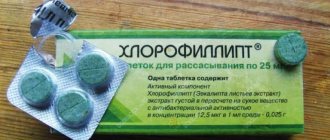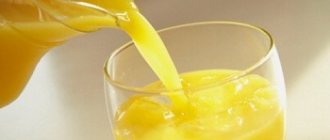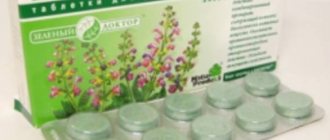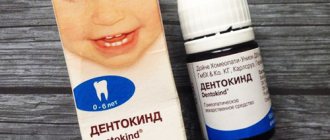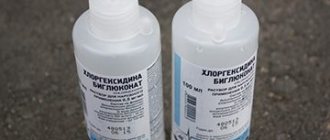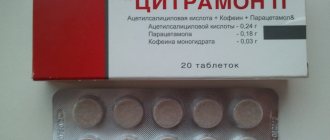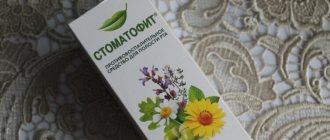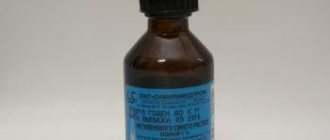Rotokan - what kind of drug is it?
The product is made from plant extracts. Rotokan contains the following components:
- calendula;
- pharmaceutical chamomile;
- yarrow.
Due to the alcohol content, Rotokan has a bitter aftertaste.
When rinsing the gums, the drug has virtually no side effects. A negative reaction is possible only due to the characteristics of the body. Depending on the indications, Rotokan can be used in childhood.
The healing properties of Rotokan
The drug based on herbal components has anti-inflammatory, antiseptic and hemostatic effects. With systematic use, regeneration of the oral mucosa is accelerated. Rotokan Vilar also has an antispasmodic effect. The plant components included in the composition have the following properties:
- Calendula. Relieves inflammation and disinfects wound surfaces. Calendula flowers contain flavonoids and carotenoids.
- Chamomile. Soothes irritated gums. The active ingredients are coumarin, choline and flavonoids.
- Yarrow. Has a tanning effect when rinsing the gums. Alkaloids stop periodontal bleeding. Resinous substances provide a quick therapeutic effect.
Rotocan contains ethanol. An alcohol-containing liquid is the basis of the product. Therefore, it is necessary to strictly follow the instructions for use.
Therapeutic effects of components
The medicinal properties of the medicine due to its composition:
- Calendula contains carotenoids and flavonoids, which determines its pharmacological activity. It has an anti-inflammatory, antimicrobial effect, is active against some viruses, promotes tissue regeneration, and relieves spasm of smooth muscles (mainly in the stomach and intestines).
- Yarrow, along with flavonoids, also consists of achillein alkanoids, azulenes and tannins. This explains its hemostatic effect (it does not lead to the formation of blood clots), antiallergic and wound healing effects.
- Chamomile flower baskets contain 0.2-0.8% essential oil, one of the components of which is chamazulene. Thanks to him, it serves as an antiseptic and helps fight inflammatory processes.
We suggest you read: How a child behaves when teething
Rotokan solution can be used as:
- antiseptic;
- a remedy that fights inflammatory processes;
- hemostatic drug;
- a remedy that has the ability to heal wounds.
The medication in question is made on a natural basis and has the following effects:
- has an antiseptic effect;
- eliminates the inflammatory process in the oral cavity;
- acts as a good anesthetic.
The main effect of the active components is aimed at destroying pathogenic flora. And Rotokan copes with the task perfectly.
Indications for use of the drug
Rotokan can be used to rinse gums for all periodontal diseases. The drug will be highly effective in the case of:
- purulent lesions;
- ulcers and erosions;
- stomatitis of various etiologies;
- gingivitis;
- periodontitis;
- periodontal disease.
The mouth is also rinsed with a rotokan as a preventive measure. The product is especially irreplaceable for mechanical damage to the gums, tooth extraction due to purulent inflammation, chronic trauma due to malocclusion and after professional cleaning of teeth and gums.
Contraindications
According to the instructions, Rotokan is contraindicated in the following cases:
- alcohol addiction;
- presence of allergies to Rotocan components;
- pregnancy or lactation (or allowed with caution);
- children under 12 years of age;
- head injuries;
- driving vehicles and work requiring high concentration.
The dosage and frequency of use must be strictly observed. If itching, redness or swelling of the mucous membrane and gums occurs, stop using Rotokan and consult a dentist.
Removal of a tooth
Is it necessary to use Rotokan after tooth extraction, and what are the dangers of root removal? There is no consensus regarding rinsing the mouth after dental surgery. Some doctors believe that rinsing with solutions removes a naturally formed blood clot, which acts as a barrier against the penetration of dirt and infection into the wound.
The ban on rinsing after surgery to remove a root/tooth is based on the assertion of possible suppuration of the wound and the spread of infection on the surface of the gum tissue. However, a number of doctors consider rinsing necessary. Why? Their arguments are based on the following arguments:
- rinsing helps remove food particles after eating;
- eliminates the accumulation of microorganisms in the wound;
- creates the prerequisites for rapid tissue healing.
If there are carious, untreated teeth around the wound surface after root removal, the risk of infection is very high. Bacteria can also move into the wound from poorly cleaned teeth and plaque.
This condition of the oral cavity can lead to the development of alveolitis and foci of inflammation in the wounded gum. Timely sanitation reduces the aggressiveness of microorganisms and eliminates their impact on the wounded mucosa.
Instructions for use. How to dilute the solution
The duration of therapy largely depends on the degree of mucosal damage. On average, you need to rinse at least 3 times a day every day until the pain in the gums goes away. If no improvement is observed within a week, then you should change the product.
How to dilute Rotokan for gargling
An effective and simple option for treating a throat would be to use Rotocan extract. To rinse, you must follow the following recommendations:
- Dilute 1 teaspoon of the drug in a glass of warm water;
- take the resulting solution into your mouth in a volume of 2–3 spoons;
- gargle for 1–2 minutes, then spit;
- repeat the procedure until the end of the solution;
- in the absence of negative reactions, repeat the procedure after 4–5 hours;
- on day 2, the dosage of the Rotokan solution is increased to 2 teaspoons.
On the third day, if inflammation is severe, add 3 tablespoons to 250 ml of boiled water.
Rotokan for rinsing gums and teeth
Dosages and methods of use are determined by the doctor. When my gums hurt, I use Rotokan in the form of an aqueous solution. 1 teaspoon per glass of water is enough. In the absence of adverse reactions, the dose is adjusted to 3 tablespoons.
The use of a certain concentration of Rotokan for gums depends on the age of the patient, the location of inflammation, the severity and duration of the disease. The simplest method of treatment is rinsing. The procedure is carried out as follows:
- Shake the bottle several times and open the lid.
- Stir one teaspoon of Rotokan in a glass of warm water.
- Rinse the gums thoroughly, focusing on the area where inflammation is present.
- After one minute of treatment, spit out the Rotokan well.
- Carry out the procedure until the liquid in the glass runs out.
Attention! The use of tincture in its pure form is prohibited. Alcohol in the composition without dilution will cause a chemical burn to the mucous membranes of the mouth and gums.
Usually there is improvement within a week. It is worth considering that Rotokan should be used regularly for gums, up to 3 times a day after meals.
Do not swallow the solution while rinsing. If Rotokan is ingested in small quantities, there will be no side effects. However, in certain cases, irritation of the gastric mucosa and the formation of unpleasant sensations are possible.
At the beginning of treatment, do not exceed the volume of 1 teaspoon. If there are no negative effects, after 24 hours you can dilute Rotokan to rinse the gums at the rate of 3 teaspoons per 250 ml of water.
Treatment of periodontitis begins with professional cleaning of teeth and gums. After rinsing, periodontal pockets are treated. In this case, Rotokan is used by soaking cotton wool in the solution and leaving them in the pathological formation for a day. This procedure is indicated no more than 5–6 times.
Help in treating flux
Often gum pain is not only due to gingivitis or periodontitis. A problem such as gumboil can take you by surprise on weekends and holidays, when a doctor is unavailable. The inflammatory process quickly spreads and the cheek visibly swells.
Rotokan is suitable for providing first aid and localizing a pathological focus.
With flux, the drug is no longer used as a rinse. The gums are subjected to application for 15–20 minutes. A gauze strip is placed in Rotokan, soaked and applied to the area of inflammation.
After application to the gums, you should refrain from taking liquids and food for 1.5 hours.
After such measures, the flux will not completely disappear, but this will help prevent the spread of pathology and temporarily improve the general condition.
Help in treating flux
Rotokan is indispensable as first aid and for flux. The dilution proportions of the product are identical to the rinsing procedure. However, you need to use it in a slightly different way.
We suggest you read: Tartar: how to get rid of it yourself at home, how to remove deposits at home
First you need to dissolve the medication in water at room temperature. Then take a gauze swab and soak it in the product. Next, the drug-impregnated material is applied between the cheek and the swollen gum for 15 minutes. After this, the tampon is removed and you do not eat or drink for an hour. This is a necessary measure in order to record the therapeutic effect.
Important! With flux, rinsing with Rotokan is not performed, since this method will not bring a positive result.
If your gums are inflamed and you don’t have Rotocan at hand, you can use regular furatsilin or chlorhexidine. These drugs contain antibacterial elements, with the help of which pathogenic agents can be easily eliminated.
Dissolve 2 furatsilin tablets in a glass of warm water and rinse. Repeat the procedure every two hours with fresh solution.
Rotocan is an effective tool used in dental practice. However, it must be used strictly according to the instructions. This is the only way you can eliminate gum swelling, combat the appearance of ulcers on the mucous membrane and rid the oral cavity of pathogenic microflora.
Share the article on social media. networks:
Rotokan for gargling for children
Due to the presence of alcohol, Rotokan is not popular in early childhood. Therefore, the instructions for use for rinsing exclude ages under 12 years. If the child is able to rinse correctly, then the concentration of the active substance in the solution is reduced. Add only 0.5 teaspoon of Rotokan to a glass of water.
It is worth considering that the drug has a specific taste that children do not like at all. In this case, they refuse to gargle their throats and gums. The procedure is replaced by inhalations using a Nebulizer. The working solution is prepared by mixing 2 tablespoons of water and one drop of Rotokan. Inhalation for the treatment of gums can also be used by children under 12 years of age. The particles of the product will act superficially and will not be absorbed into the blood.
Consumer Opinion
Reviews from ordinary people who have tried rinsing with Rotokan solution in practice.
I used to use this remedy for a sore throat, but recently I learned about another use for it: the dentist recommended it when I was grinding down a tooth before installing a crown.
There were unpleasant, even painful sensations in the gums, so to calm them down, I rinsed my mouth with Rotokan. The drug helped a lot, it became much easier!
Marina, 36 years old
A couple of days ago I had a very unfortunate trip to a cafe - I severely injured my gum on a fish bone. A friend recommended Rotokan, recommended it as a cheap and, importantly, very effective remedy, bought it immediately, and began using it, as written in the instructions for use, as a lotion.
The next day, the gums were almost not swollen and did not even hurt, rather they just ached. Well, a day later there was no trace left of all the pain and swelling. I can confidently recommend this drug.
Read also: How to kill the dental nerve
Ekaterina, 26 years old
I had to remove the tooth, the extraction was difficult. The gums looked simply terrible and were very painful.
The dentist prescribed me Rotokan, usually I just put a little solution in my mouth and hold it so that the scab from the wound does not fly off (this can happen if you gurgle too much in your mouth).
On the second day I woke up without feeling pain or bloating! Of course, I had to use the medicine for a few more days, but in any case, I am glad that the effect of taking it came almost immediately and it only got better from there.
Olga, 22 years old
Rotokan during pregnancy
The drug is not prescribed during pregnancy or breastfeeding. The reason is the presence of ethanol. In some cases, the development of side effects in the fetus due to plant components has been established. Rotocan for the treatment of gums during lactation can be prescribed if breastfeeding refuses.
Attention! Taking Rotokan orally during pregnancy or lactation is strictly prohibited.
If there is a need to use Rotokan for gum disease and its therapeutic effects are higher than the risk of harm to the child, then it is prescribed with caution. At the beginning of the therapeutic course, a minimum concentration of the diluted solution is allowed. In the absence of negative effects in the infant, the dosage and frequency of use is gradually increased.
Price
The popularity of applications and rinsing with Rotokan on the gums and throat is due not only to its pronounced therapeutic effect, but also to its affordability. The average price of the drug is 34 rubles. Rotokan Vilar 50 ml costs a little more, about 50 rubles. The product is available without a prescription in all pharmacies. The shelf life of the medicine is 2 years.
It is recommended to use Rotokan to treat gums or throat in the initial stages of illness or in parallel with traditional medicines. As an independent use, the drug is also suitable for the prevention of dental diseases and pathologies of the upper respiratory tract.
Bibliography
- Barer G.M. – Periodontal diseases. Textbook, M.: GEOTAR-Media, 2008.
- Dmitrieva L.A. — Modern aspects of clinical periodontology, M., 2001.
- Ijndhe J. - Textbook of Clinical Periodontology. 1995. Copenhagen.
- V. N. Trezubov - Preliminary treatment of patients before dental prosthetics, M.: Medical Information Agency, 2009.
- Pakhomov G.N. - Primary prevention in dentistry, M., Medicine, 1982.
- Muravyannikova Zh.G. — Dental diseases and their prevention, Rostov-on-Don, 2007.
- G. M. Barer, E. V. Zoryan. — Rational pharmacotherapy in dentistry, M.: Litterra, 2006.
Read related posts:
Rinses and lotions
Flux or periostitis develops due to advanced pulpitis, periodontitis, periodontitis. It progresses rapidly, leading to serious complications including sepsis and death. Therefore, the main treatment should be carried out in the clinic, other measures only complement it.
One of the auxiliary methods of therapy is oral baths. They relieve swelling, inflammation, soothe and heal the mucous membrane.
Medicines
The best option for removing swelling, even if the tooth does not hurt, but the cheek is swollen, is pharmaceutical antiseptic solutions. The following drugs are most often prescribed.
Chlorhexidine
The most popular and cheapest antiseptic for periostitis. It is active against most pathogenic microorganisms: anaerobic, aerobic, gram-positive and negative.
The most popular and cheapest antiseptic.
Important! It is worth considering that chlorhexidine has little effect against viruses and fungi. And it affects bacterial spores only at elevated temperatures.
The product rarely provokes allergic reactions. Available in bottles at a concentration of 0.5%. The solution should be used undiluted every couple of hours. The average price of chlorhexidine is 10 rubles.
"Betadine"
The main active ingredient is iodine. It has an antiseptic and anti-inflammatory effect. Effectively draws out pus, promotes its discharge and reduces flux.
Use Betadine for periostitis 4 times a day. To prepare the solution, you need to dilute 20 drops of the drug in a glass of warm water. You can buy it for 150 rubles.
Additional Information! Also used for rinsing against periostitis are Miramistin, hydrogen peroxide, or any mouth rinse containing alcohol.
The active ingredient is iodine.
"Rotokan"
Herbal preparation based on alcohol. Contains a squeeze of calendula, chamomile, yarrow. Relieves swelling, inflammation, disinfects the oral mucosa.
Apply flux tincture according to the scheme: 20 ml of product per 200 ml of water. Mouth baths are done every 2-3 hours. The price of "Rotokan" is about 50 rubles.
Folk remedies
Home remedies for flux are also actively used in dentistry. They are prescribed as an independent remedy or in addition to medicinal antiseptics.
Soda and salt
How to quickly and effectively remove swelling from dental flux using improvised methods? 15 best rinses, lotions, ointments, antibiotics and decongestants.
Soda-saline solution is the main home assistant in the treatment of any inflammatory processes, including periostitis. The components perfectly disinfect, draw out pus, reduce pain by reducing swelling, inflammation and death of microbes.
For cooking, take 1 tsp. baking soda and salt per glass of lukewarm water. You can use any salt: table salt or pure sea salt. To enhance the effect, add 2-3 drops of iodine.
A simple and effective recipe.
Herbal infusions
Tinctures of medicinal herbs also have a good anti-inflammatory effect for periodontitis and, to a lesser extent, a disinfectant effect. In addition, they soothe the affected area and relieve pain.
The best options for treating gumboil are sage, calendula, chamomile, eryngium, mustard plaster, lemon balm, wormwood, oak bark and calamus root. The components are taken one at a time or in any combination.
2 tbsp. dry leaves or flowers are poured with half a liter of hot water and brought to a boil in a water bath. Leave for 2–3 hours, strain, and heat to a comfortable temperature. The mouth is rinsed as standard.
Additional Information! You can also buy alcoholic tinctures of herbs. They are used for periostitis at the rate of 20 drops per glass of water.
Herbal decoctions have an excellent anti-inflammatory effect.
Propolis
Ouzo or bee glue is a well-known folk remedy. This is the best natural antiseptic. It also has a weak anesthetic effect.
It is best to buy a ready-made propolis tincture (5%) in alcohol or oil. The second is suitable for children, pregnant and lactating women. It is diluted in standard proportions in water for rinsing, lubricated with swelling and gums around it, or moistened with a sponge and applied to the gumboil.
Read also: Osteomyelitis of the upper jaw symptoms
Important! You can also simply chew pieces of propolis for 10 - 15 minutes.
Propolis can be chewed.
Aloe and Kalanchoe leaves
These plants are widely used in folk medicine. They are used against infectious and colds.
To eliminate periostitis, take freshly squeezed juice, ground or cut leaves with the spines removed. They lubricate the swelling or apply it to it, wrapped in gauze. Keep the lotion for up to 2 hours. You can also simply chew the plants.
Important! Kalanchoe and aloe are very bitter and leave an unpleasant aftertaste for a long time. This may be a good reason to replace them with other means.
The juice can be used to lubricate wounds or make lotions.

